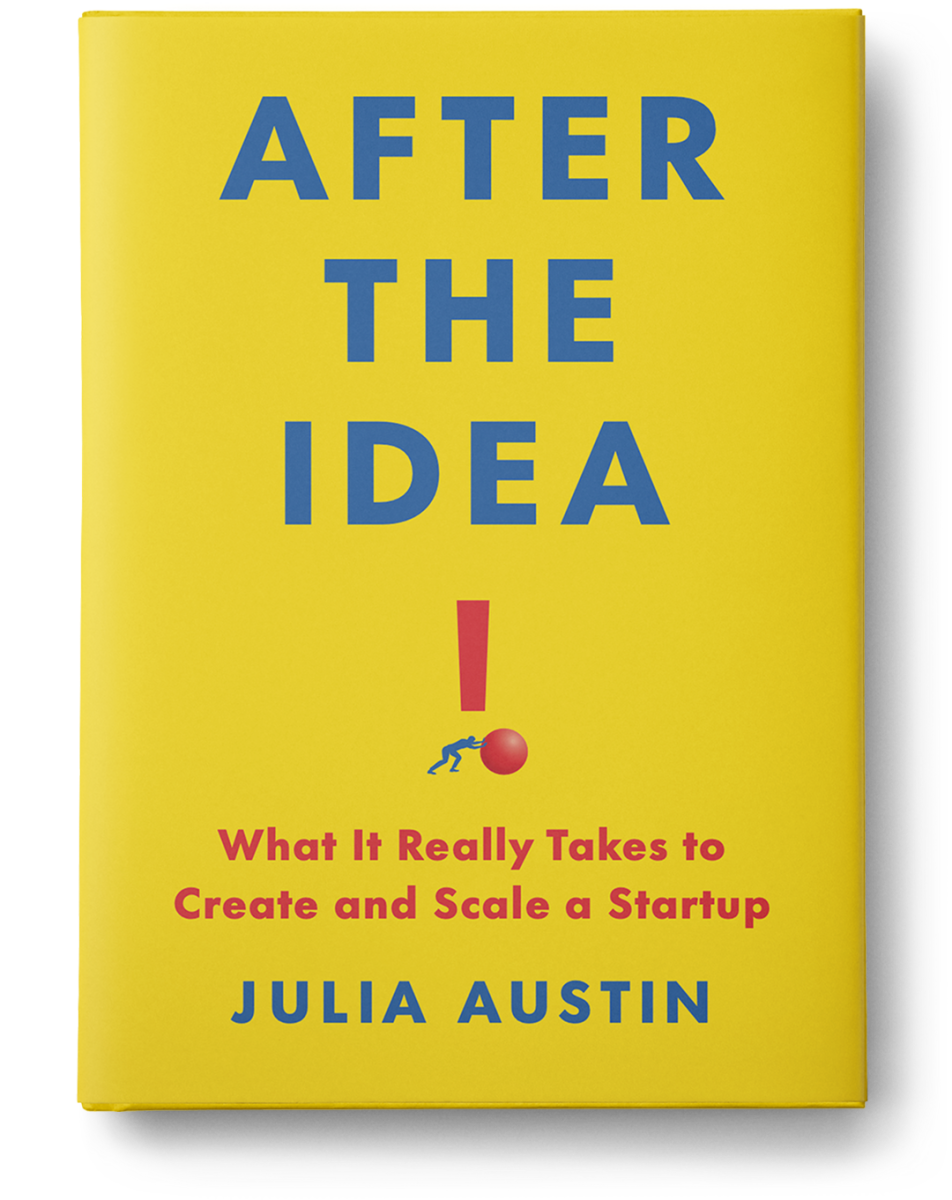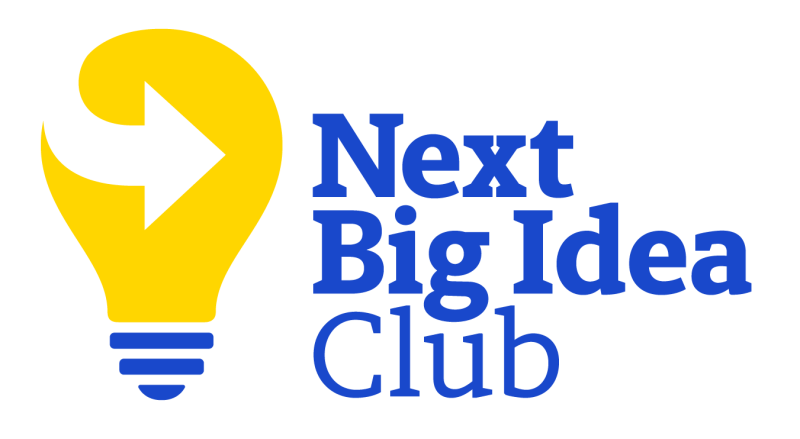
AVAILABLE
NOW

ORDER NOW
Available anywhere book are sold
Chapter 1
The Definition of Success
Whether this is your first startup or you’ve done this before, it’s essential to pause and define what success means to you—not just to your investors, customers, or cofounders. Startups are long, winding, emotionally demanding journeys. Without a clear understanding of why you’re doing this and what you hope to achieve, it’s easy to lose your sense of direction or end up chasing someone else’s version of success. Your goals might be financial, personal, impact-driven, or all of the above—but getting honest about them now will shape how you make decisions, build your team, and define trade-offs along the way. There’s no single “right” answer—but there is value in being intentional from the start. Here are a few prompts to get you thinking about what success means to you:
Chapter 2
Why Discovery Matters
It’s tempting to dive straight into building—especially when you’re excited about your idea. But skipping or rushing discovery work often leads to wasted time, misaligned teams, and products that don’t solve the right problems. By preparing thoughtfully, you’ll enter conversations with potential customers with clearer intentions, better questions, and a stronger foundation for insight. The more grounded your discovery process, the more likely you are to build something people truly need. As you head into the discovery process, consider the following questions:
Chapter 3
The Art of Discovery
Before digging into interviews and experimentation work, consider what you hope to get out of the discovery process, beyond the tactical insights, and how you will approach some of the challenges you may face. I recommend you journal your answers to the below and, if you have a cofounder, team or coach you are working with, that you discuss your answers together to identify ways you can get support and support each other through the process.
Chapter 4
The Customer Journey
You’ve talked to potential users. You’ve gathered insights. Now what? It’s time to make sense of what you’ve heard by mapping the customer journey—visually documenting the steps, thoughts, and feelings your target customer experiences as they discover, consider, and use your product. Journey maps and storyboards help you identify what your customer is trying to achieve, where they get stuck, and where there are moments of opportunity or delight. They’re not just design tools—they’re strategic. When used well, they guide product development, marketing, onboarding, and even hiring.
As you reflect on your discovery interviews and experiments, consider these prompts:
Chapter 5
Setting the Vision and a Plan
A startup without a clear vision and a plan can quickly fall into reactive mode—chasing ideas, responding to noise, and confusing motion with progress. That’s where OKRs (Objectives and Key Results) and KPIs (Key Performance Indicators) come in. Used well, they don’t just create structure—they create alignment, momentum, and accountability. The process of setting them helps clarify what matters most and how you’ll know you’re on the right track. It’s not about writing the perfect goal—it’s about making sure everyone is rowing in the same direction. Use the prompts below to define your vision and begin crafting meaningful goals:
Chapter 6
The Cofounder Courtship
Deciding whether or not to have a cofounder is one of the most consequential early choices you’ll make. A great cofounder can bring partnership, expertise, and experience; a bad one can drain time and create tension that potentially derails the business. Before jumping into a partnership—especially one born of urgency rather than intention—get clear on what kind of cofounder (if any) you need, and whether the match is right. This isn’t just about complementary skills; it’s about shared values, mutual respect, and the ability to work through conflict.
As you reflect on your current situation—or evaluate a potential cofounder—use these prompts:
For joiners considering a role at a startup:
Chapter 7
Establishing a Kick- Ass Organization from Day One
When considering the type of company you want to build, its culture, and how it will function as you scale, answer the following questions in your journal and/or perhaps as a diverge<>converge exercise with your cofounder(s):
Chapter 8
Hiring Best Practices
Every hire you make in the early days helps shape your company’s culture, operating style, and trajectory. The temptation to “just fill the seat” can lead to costly missteps—especially if you don’t yet know what kind of team you’re trying to build. Before you post that job description, step back and think about your organizational needs, what “great” looks like for this stage, and how you’ll ensure that new hires don’t just fit your culture—they expand and enrich it.
Use the following prompts to ground your hiring strategy:
Chapter 9
Separation
Letting someone go is one of the hardest parts of building a company—and one of the most important to handle well. But before jumping to termination, it’s essential to pause and reflect: is this truly a performance issue, or a mismatch in expectations, support, or communication? Founders often wait too long to act—or move too quickly out of frustration. Either path can damage trust, culture, and momentum. Thoughtful separation begins with thoughtful inquiry. Taking the time to ask the right questions can help you clarify whether the situation is fixable, how to communicate clearly and respectfully, and whether parting ways is truly the best outcome for both the individual and the business. Before moving toward termination, ask yourself:
Chapter 10
Legal Matters
You can’t plan for every possible legality throughout the life of your startup, but one should at least do an inventory to assess what areas are of most concern such as:
Chapter 11
Financial Matters
Money may not be why you started the company—but how you manage it will make or break it. Early financial decisions set the tone for discipline, transparency, and long-term viability. Even if you’re not the “finance person,” you still need to understand where your money is going, who’s accountable, and what assumptions your budget is built on. This isn’t just about bookkeeping—it’s about staying in control of your runway and being ready for whatever comes next.
Use these prompts to check your financial foundations:
Chapter 12
Fundraising
Raising capital can be both empowering and distracting. Before diving in, get clear on why you’re raising, what kind of investors you want at the table, and whether your business is truly ready. Fundraising isn’t just about getting money—it’s about forming long-term relationships and creating a rhythm of communication and accountability. If you do raise, you’ll need to juggle investor conversations while still running the business—and prepare for what comes after, like board meetings and updates.
Use the following prompts to assess your readiness and approach:
Chapter 13
Go- to- Market Strategies
Having a great product isn’t enough. How will people hear about it? Why will they care? And what will make them come back? Your go-to-market (GTM) strategy should reflect who you’re building for, how you want to be perceived, and where you’ll find early traction. It’s also a place to start setting performance expectations—because GTM isn’t a one-time launch; it’s a series of learnings that guide future growth.
As you shape your GTM strategy, consider these questions:
Chapter 14
A Tale of Two Stools: How Innovation and Delivery Can Sit Together
Great startups balance what they’re building with how they’re delivering it. One “stool” represents product, engineering, and design—focused on creating something new. The other stool—product, sales, and support—focuses on getting that product into the hands of real users and understanding how it’s performing in the wild. When these two efforts are siloed, you risk shipping things that don’t work—or failing to adapt when they do. But when they’re in sync, you create a tight feedback loop that fuels smarter decisions and faster iteration.
Use the prompts below to reflect on how these teams can work better together:
Chapter 15
Communication Strategies
There are three specific foci in this chapter: How you communicate with various stakeholders, how you handle crises and how to deal with conflict. The prompts below cover each:
Stakeholder Communication:
Crisis Management:
Managing Conflict: If you are experiencing conflict with a team or individual, ask yourself the following questions, and based on your answers, devise a plan to resolve the conflict or consider asking a coach, therapist or mediator to help facilitate a tough conversation.
Chapter 16
Building to Scale
As your company grows, so must your leadership. What once required your hands-on involvement will increasingly require you to step back, delegate, and trust others to take the lead. This transition can be emotionally tricky—letting go of control, redefining your role, and helping early team members adapt to new layers of management. Scaling well means learning to separate what needs to get done from how it’s done, and creating a culture that empowers others without losing your core DNA.
Reflect on these prompts as you consider how to scale intentionally:
Chapter 17
Balancing Hats and Mental Health
Founders wear all the hats—and it’s a heavy load. The constant switching between product decisions, team dynamics, investor conversations, and personal obligations can take a toll. Burnout isn’t a badge of honor; it’s a warning sign. Learning how to protect your time, prioritize your energy, and ask for help isn’t just good for your health—it’s essential for your leadership. The most effective founders build a support system early: coaches, therapists, peers, and boundaries.
Use the following prompts to reflect on your well-being and work-life balance:
Chapter 18
Exits and Transitions
At some point, every founder faces the question: Should I keep going—or is it time to exit? Whether you’re contemplating an acquisition, acquihire, IPO, or even a shutdown, this is one of the most emotionally and strategically complex decisions you’ll make. It’s not just about what’s possible—it’s about what’s right for you, your team, your investors, and the vision you set out to achieve. The right path forward often requires letting go of ego, revisiting your original goals, and considering what success looks like now, not just when you started.
Use these prompts to explore your exit readiness and options:
Refer to this blog post for more detailed frameworks to process your transition regardless of the path to exit.
Welcome. Let’s roll up our sleeves and build something that lasts.

AVAILABLE
NOW

ORDER NOW
Available anywhere book are sold